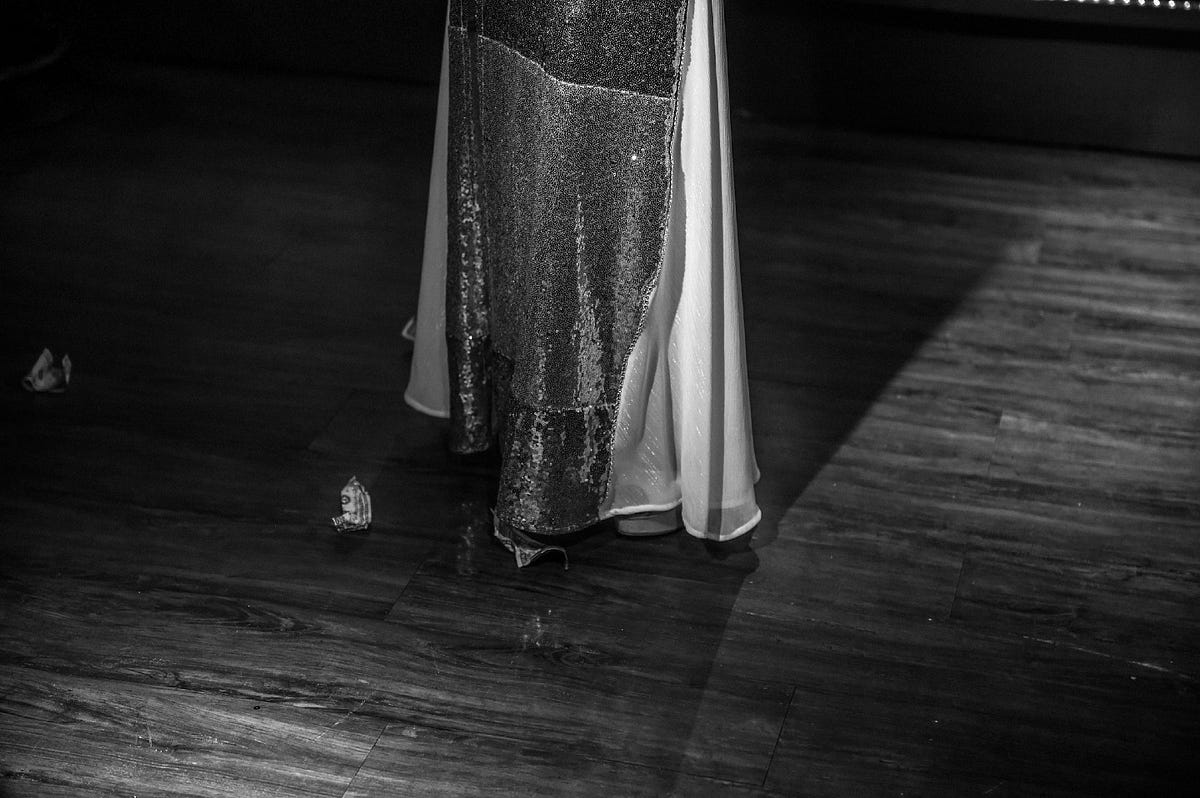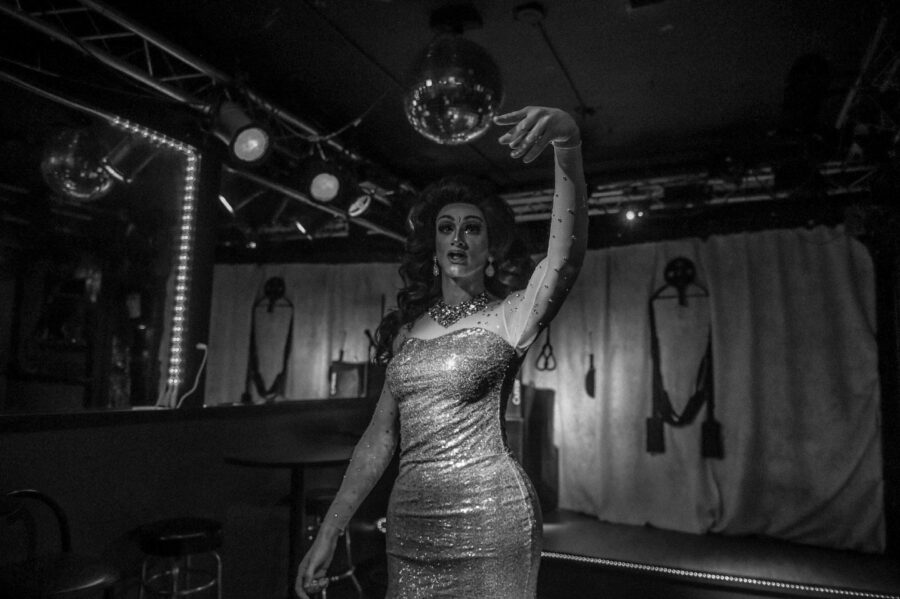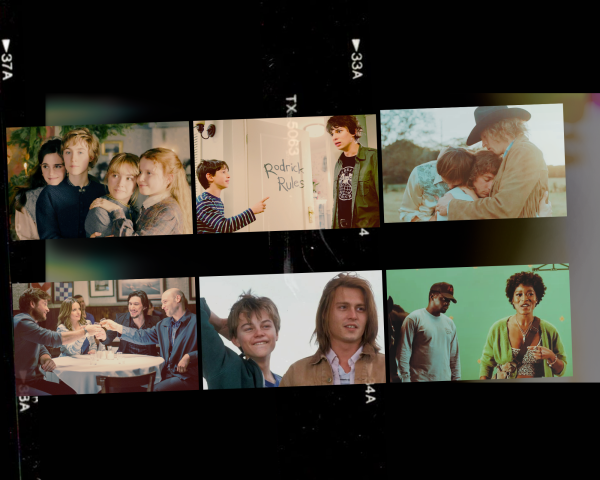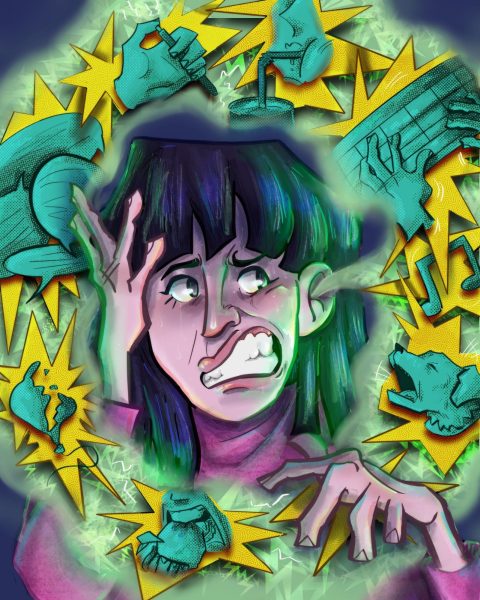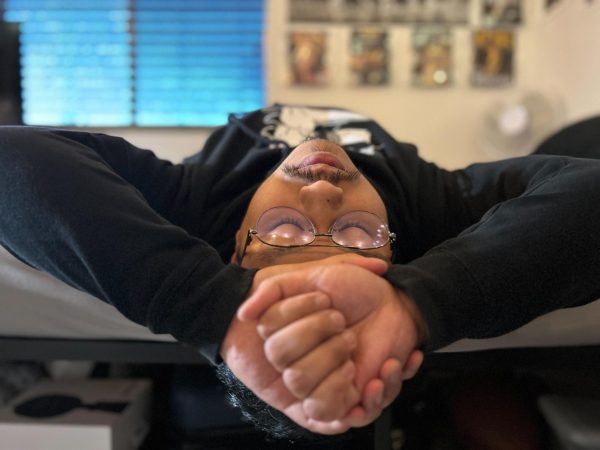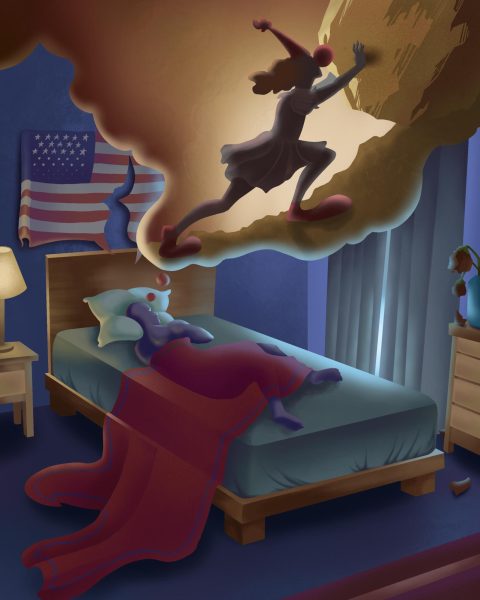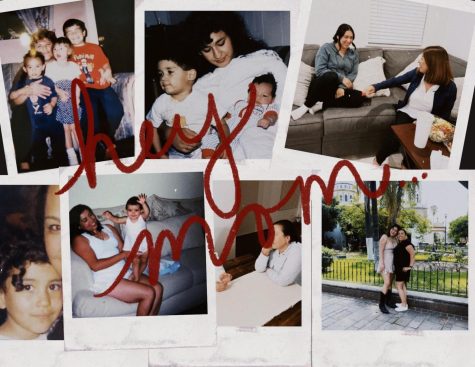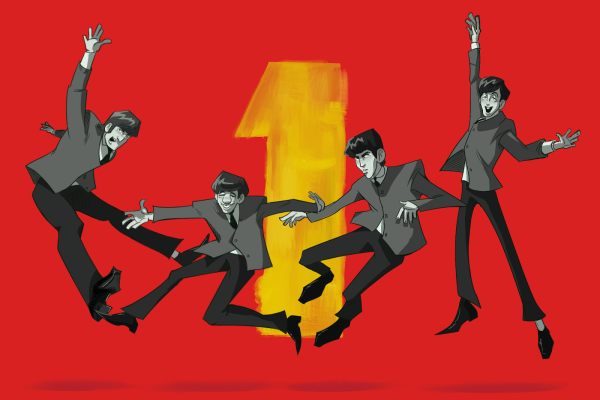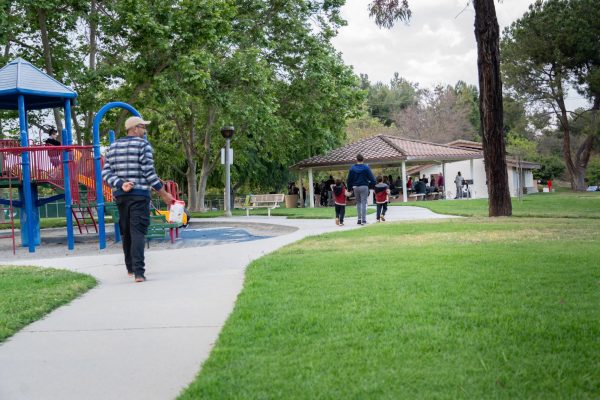Behind the Lashes
A series highlighting the drag queens of Los Angeles
Drag Queen Tresseme performs a remix of Ariana Grande’s “Greedy” on May 17, 2019 at the Boulevard Bar in Pasadena, California. Photo by Pablo Unzueta.
Story by Brigette Lugo, Photos by Pablo Unzueta
Glitter. Wigs. Heels. Lipstick.
The art of female impersonation, also known as drag, was brought into mainstream culture thanks to the reality show hit, “RuPaul’s Drag Race.” However, this form of entertainment and performance goes much deeper than what is displayed on the screen every Thursday night on VH1. There are drag clubs, bars, and competitions across the United States, and Southern California is no exception.
In the corners off the gritty streets of Los Angeles County, venues are filled with males performing lip syncs in drag to engaged audiences. From the freeway exit of Mission Inn in the Inland Empire to Hamburger Mary’s in coastal Long Beach to Toucan’s Tiki Lounge in the desert oasis of Palm Springs, the artistry of drag performance is in bloom. But behind these smokey eyes and press-on nails are stories of sacrifice, struggle, and personal evolution.
This series offers a glimpse into the lives of the queens behind the lashes.
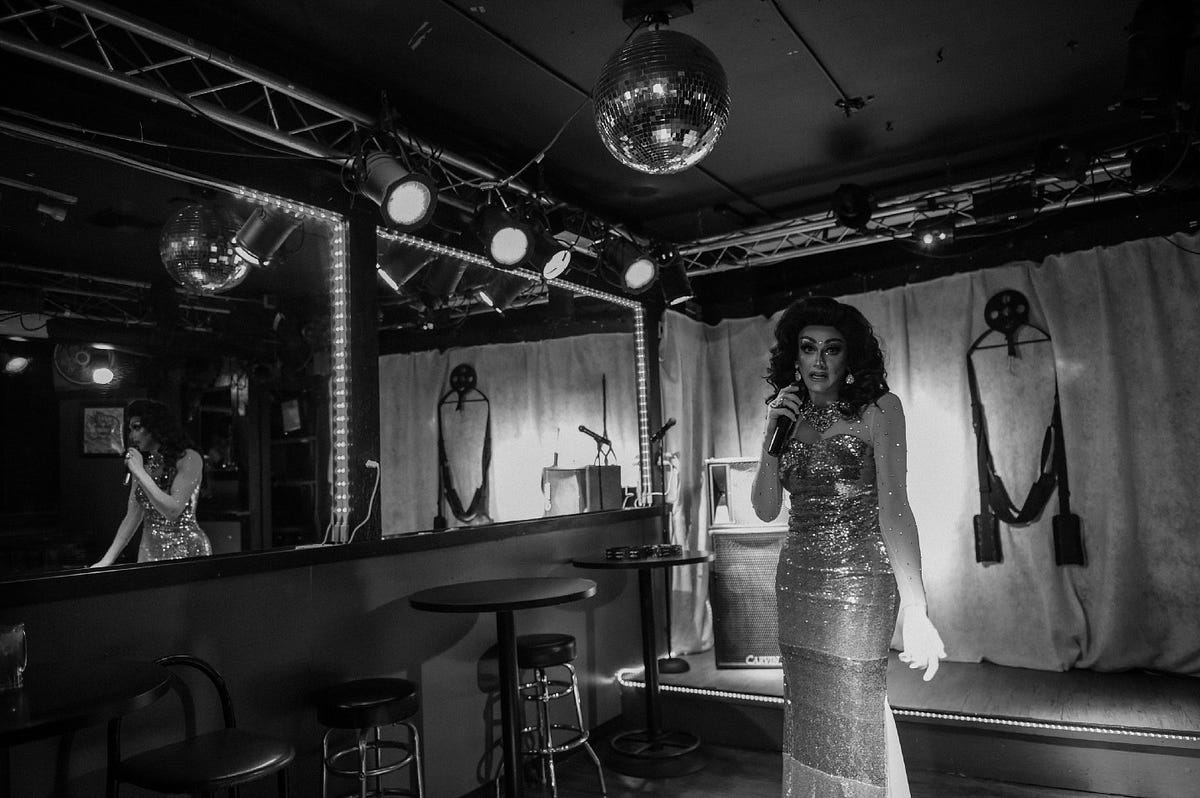
The first two things you notice about Tresseme when she steps on stage is her glamorous beauty and tall, slender stature. She’s not just looks. She sings, too.
This is one of the many traits Lyle Mackson, the man who fills Tresseme’s heels, presents once you meet him. Mackson has a charismatic personality.
Tresseme is a performer who can make you laugh during a live and ironic performance of “I’m Not a Girl, Not Yet a Woman,” while still keeping you in awe of how effortlessly she sings hits all notes.
Mackson, who considers himself a singer and multi-faceted performer, said the decision to move to Los Angeles four years ago was because of an artistic drought he felt within the theater musical New York scene.
“I felt a significant shift in Manhattan, artistic-wise. I felt like the artistry was selling out to commercial bullshit,” Mackson said. “No one was creating their own musicals anymore. It was like “What movie can we turn into a musical and what celebrity can we cast in that movie-musical?”
The staleness motivated Mackson to try new artistic avenues on the West Coast.
“It just got really stale and boring and I’d lived in New York my entire life so I was like, ‘If not now, when?’ he said.
Thanks to a close friend and their wise words, Mackson took the leap. “My friend said, ‘Just jump. It could be a really lovely fall.’”
I’ve been enjoying this fall for four years. It’s one of the best decisions I’ve made. Just leaving and starting fresh and new. It’s been lovely.”
Mackson did not explore the drag world until he reached Los Angeles.
“I didn’t really get into the drag thing until I was out here. I dabbled in New York but only as an artistic outlet to switch things up,” he said.
Mackson saw a difference between New York and Los Angeles drag.
“I would say that L.A. is just a different type of drag. New York is more gritty, and business, ‘I’m here to do my job.’ Out here, it’s more laid-back-let’s-have-fun type of vibe.
Mackson’s first steps into the drag stage were by chance.
“For lack of a better term got “dragged” into it,” he said.
While he was working on a production of Rock of Ages, Mackson was playing the role of Franz. Mackson described the character as, “He is this German and the joke is he’s clearly a homosexual throughout the whole show just because he’s wearing lashes and blush and he’s very effeminate and then at the end of the show he’s like ‘I’m not gay. I’m just German!”
Mackson said that thanks to Rock of Ages he was able to create the beginnings of Tresseme.
“Before doing that show I knew nothing about make-up,” he said. “I had to go to a makeup class to learn the make up scheme of this character and then I learned ‘Blush goes here and contour goes here and lashes go this way…,”Mackson said. He added that while on the show, there was another cast member who did drag full-time and he was hooked and wanted to learn more.
As Mackson got more of a hold on how to beat his face to the gods, he emphasized he wasn’t so pretty at first.
“I looked a little busted, even though I was doing all the right things. You should see what I first looked like. I was a busted queen.”
Mackson gave props to his fellow cast member who did drag full time and took him under his wig. Other cast members then followed. The drag bug had bit them all.
“There’s a finesse that you learn with trial and error. He just taught me things and then it just kind of escalated. It turned into full drag. Once full drag happened, I had another cast member who it sparked his interest and then another one and then there were five of us and then we were just five drag queens running around,” Mackson said.
The chances to perform in drag kept sashaying Mackson’s way. He said his friend was performing in a show where a queen dropped out last minute.
“‘I know you don’t perform but I need someone. Please come. It’s in the basement,’” Mackson’s friend told him.
The Basement might be confused as the name of a club, but the show was literally in a basement of a club. Mackson said he just did it as a favor for his friend but the evolution to queendom turned addictive.
“I get told I’m pretty a lot. That gets addictive. It’s like, ‘Tell my I’m pretty! Oh, I need to put this wig on for you to tell me I’m pretty?’ I’m gonna put the wig on,” Mackson said.
Once he started hanging out with more people doing drag, he began building his own drag persona.
“You start hanging out with more people and you start learning the tricks of the trade. You start watching make-up tutorials in your off time and you pick up little tricks here and there and then it just turns into a finished product. I am by no means finished but I am learning a lot,” Mackson said.

Another gateway into the drag world for Mackson was RuPaul, host of the reality T.V. competition “RuPaul’s Drag Race,” who Mackson cites as a major influence as a person first, and a killer queen second.
“I started working at Disney. And then I started reading a bunch of RuPaul’s books,” Mackson said. “I started listening to his podcast and his interviews on YouTube. Drag aside, I relate to that human being so much.”
Mackson loves repping his drag persona and everything he’s built Tresemme up to be. He said he has different elements that make up who he is, besides the art of female impersonation, like Ru, himself. He explained:
“Now that Rupaul is who he is, if he’s ever interviewed, or on a TV show, it says, ‘RuPaul, actor, producer, singer, comedian.’ Drag queen is last… He never wanted to do drag, which is kind of the boat I’m in. I love it, but it’s not my profession. It’s not what I wake up wanting to do. I’m a singer. And he talks about how he only did drag because it’s what people wanted him to do. Cuz he was pretty, he was tall,…. And that’s what paid his bills. And I was like ‘Well honey, if it works for you… Imma do it too!’”
Paying bills through theater and singing is what Mackson has hoped for since he was a kid.
Mackson said that Drag Race has served as a positive outlet for the drag community, but has not come without its flaws.
“It’s a positive thing with negative attributes at times. Has it catapulted us into the mainstream? Absolutely. Has it made it a more acceptable art form? Yes. But it also, drag is freedom of expression, period. To box it in the way the show has to the general public hurts it in a way.”
Mackson also said the general public needs to know that drag has way more layers than looking like what society deems beautiful, high heels, and a cute lip sync.
“Where the public believes the drag formula is what Drag Race puts out, but that’s not the case. I have talked to some friends who have said, ‘But she’s gorgeous and her make-up,’ but looking a certain way and having great make up skills is literally the smallest part of drag performance.”
